The Latest from TechCrunch |  |
| MSN Picks WetPaint To Add A Fresh Coat To Its Entertainment Pages Posted: 29 Apr 2009 07:30 AM PDT
Two dozen such sites are set to be launched over the next few months. These sites will specifically be powered by WetPaint Injected, its service which allows any site owner to place user generated content onto their sites. That’s exactly what MSN plans to do, as it will still house the sites, but will simply populate pages based on the content that fans create. Though none are yet live, you can get a taste for how this might work with the WetPaint-powered page Showtime has for its show, The Tudors. It features a large community updating the site regularly, giving other fans pictures, video clips and commentary. And what’s really nice about these WetPaint Injected-powered site is that they play nicely with search engines, WetPaint CEO Ben Elowitz tells me. With a lot of other widget add-ons that usually power fan pages hosted elsewhere, the search engine crawlers have trouble parsing the site, but WetPaint is SEO-friendly, and that has led to large increases in traffic from searchable terms that fans include on pages. Elowitz notes that it’s nice to see MSN taking a lead in making its sites more socially friendly, when other large portals are strugling with that. And as a number of big names in entertainment and brands start to move to use fan pages on Facebook, he also notes that WetPaint-powered fan pages perform well when compared to Facebook fan pages. Generally, the WetPaint variety see 100 times the usage from fans when it comes to contributions and comments, he says. Elowitz wouldn’t go into the specifics of the arangement with MSN, but notes that usually its outside business deals involve revenue sharing and/or some sort of fee for their service. It seems to be a smart play by MSN. Why pay someone to do work that fans will do for free? Not only that, but fans tell other fans about the contributions their making, and it’s like built-in buzz for the community you’re targeting. And when you serve everyone who comes to these sites ads, you have a nice little, basically free, revenue stream right there. WetPaint also has a smaller side project it’s working on in light of the recent shut down of Geocities. GARP, or Geocities Asset Recovery Plan, will allow stranded Geocities users to transfer their sites over to Wetpain using their migration kit. WetPaint is even offering to buy domains for the first thousand sites that migrate. Crunch Network: CrunchBase the free database of technology companies, people, and investors |
| Conductor Raises $10 Million For SEO Management And Optimization Technology Posted: 29 Apr 2009 05:52 AM PDT
Conductor markets technology which aims to empower online marketers and interactive agencies to gather reliable data on their SEO efforts, make better decisions on capturing natural search market share and accurately measure ROI for their employers or clients. Conductor, which was co-founded by Seth Besmertnik and Jeremy Duboys back in 2005, is playing an interesting field where there’s undoubtedly still quite some room for growth, but it’s up against some stiff competition from other companies (we recently covered funding rounds for Marin Software and Kenshoo, although these focus more on the SEM i.e. paid search part of the business). The extra funding should give Conductor some more runway to make its services stand out of the crop, and with an experienced management team, which includes former executives from ContextWeb, Apple, Yahoo! and DoubleClick, we consider the company to be a serious contestant in the space. Crunch Network: CrunchGear drool over the sexiest new gadgets and hardware. |
| P2P Lending Marketplace Prosper Gets Off The Bench, Debuts Open Market Initiative Posted: 29 Apr 2009 05:23 AM PDT
But now Prosper is back despite the fact that the SEC hasn’t yet approved its operations, and while they have respected the requested silence up during the six-month hiatus, they haven’t exactly stalled development of the service. The company relaunched its lending services yesterday for the State of California (borrowing can be done throughout the U.S.), and is hoping to take the whole thing nationwide soon. There are new features, too. Prosper announced its Open Market initiative, which will allow other financial institutions (e.g. auto lenders, small business lenders and community development lenders) to place their already funded loans the Prosper website for auction. The company will vet lenders and require three payments to have already been made on any loan up for sale. Prosper has raised $40 million in capital to date from Accel Partners and Benchmark Capital, among others. It’s up against well-funded competitors such as Zopa and Lending Club. Crunch Network: CrunchBoard because it’s time for you to find a new Job2.0 |
| IMShopping Is A Human Powered Product Search Engine For Twitter Posted: 29 Apr 2009 04:45 AM PDT
IMshopping has launched a human-powered shopping search site and Twitter shopping service designed to help consumers find niche products on the web. It’s sort of like a shopping 411 service, which human guides on call respond to product questions and provide personalized recommendations for users about what product best suits their needs. IMShopping tries to simulate the experience of going into a store, speaking with a sales person and being guided to the item that works best for you. IMShopping also closed a $4.7 million Series A round of funding from SK Telecom Ventures. IMSHopping hopes to fill the gap pf personalized, detail-oriented service that e-commerce sites don’t have, since these sites are focused less on answering technical questions about a product and more on price and reviews. Twitter users can directly ask questions by messaging @imshopping. The shopping guides in the community and trained experts offer detailed responses within minutes. Shoppers can use these responses to instantly make purchases or save to their own folders before making a product decision. Shoppers who are asking questions on IMShopping’s site can search IMshopping's database for product questions that have been already answered, or pose their own shopping questions (the site currently has an archive of 20,000 questions). As the shopping guides craft their response, they review a detailed analysis of the product, including specifications, reviews from third-party sites, blog buzz and price. This response is then delivered to the shopper and also archived anonymously for review by future shoppers. All public questions and responses are searchable via Twitter or can be viewed by following @imshopping. Consumers can also ask direct questions via Twitter that are not made public. The guide will give you an answer of where to find your desired item and also provide you with links to sites where the item can be purchased. You can also rate the response you received from the guide-the guides are paid based on the quality and etail of their responses. The site is really designed to get answers on where to get hard to find or obscure items-like what electronic toy is best for a hyperactive two year old. If you already have a specific item in mind, the site may be useless to you. As a business model, IMShopping collects revenue when consumer buy products that are recommended through the site. The problem is that when a consumer finally gets the right product for their needs, what is there to stop them from then searching for the produt on Google. The company is staying quiet on future business plans we are told that over time the company will roll out programs for general consumers to earn value from assisting on searches and getting rated for the quality of their answers. Human search hasn’t done well in the past; take a look at ChaCha’s former business model. It’s hard to understand how human guides could do better than Google or Yahoo unless the guides are experts in electronics, clothes etc. IMShopping is hoping to add the human touch to the online shopping experience but increasingly retail sites employ staff to conduct live chats with potential customers. 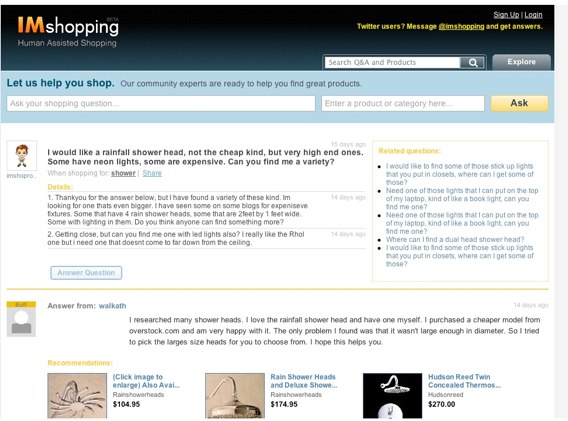 Crunch Network: CrunchBoard because it’s time for you to find a new Job2.0 |
| IAC Buys UrbanSpoon Based On Good Recommendations Posted: 29 Apr 2009 04:26 AM PDT
Terms of the deal were not disclosed, but I hear that it’s definitely worth something in the millions of dollars range. And it had to be, because UrbanSpoon was perfectly happy continuing to grow its business on its own, as it was already fairly profitable, Lowry tells me. But IAC, came in with “an offer we couldn’t refuse,” according to Lowry. He would only elaborate that, “we’re very happy with the deal.” UrbanSpoon first popped up on IAC’s map when it began pulling in Citysearch reviews to serve up to customers. IAC was impressed with the local audiences UrbanSpoon was able to attract, Lowry says. The two sides had been talking informally on and off starting in the second half of last year. Coincidentally, this was right around the time when the iPhone 3G and Apple’s App Store launched. I mention those because they were really the catalysts that catapulted UrbanSpoon into the spotlight. Actually, UrbanSpoon was one of the first iPhone 3G-specific apps I ever looked at because I thought it made interesting use of the device’s GPS chip. When you start up the app, it locates you via GPS, then you shake the phone and it comes up with a random restaurant near you. You can tailor these searches to be more or less random, but it’s so simple and turns indecision into a form of entertainment and discovery. Others clearly agreed as UrbanSpoon was a mainstay in top downloads area of the App Store, and Apple even thought enough of it to use in one of its commercials. Lowry and the rest of the team will stay intact with the move to IAC, and will keep UrbanSpoon based in Seattle. They still have plenty of things in the pipeline, including updates to the iPhone app, but given IAC’s wide range of properties from the aforementioned Citysearch, to Ask.com, to Match.com to Evite, there are a lot of potential new things that UrbanSpoon can delve into now. Crunch Network: CrunchBoard because it’s time for you to find a new Job2.0 |
| Kickstarter Launches Another Social Fundraising Platform Posted: 29 Apr 2009 03:44 AM PDT
This is an online platform that enables just about anyone to raise funding from interested individuals. Basically, Kickstarter took what Sellaband is all about and applied it to a wider variety of projects, i.e. not only to discover and fund upcoming bands but anyone who does something creative (think designers, musicians, filmmakers, writers, etc.). At launch, the service is restricted to people who are invited to the service, but you can sign up here to be notified when that changes. Baio, who sits on the startup’s board and advised the company for the past 10 months, explains:
People who start projects on the platform to get funded by others retain 100% ownership over everything, but need to find a way to give people an incentive to pledge (this can be anything, preferably related to the actual project of course). Kickstarter also doubles as a publishing platform where project creators can keep anyone or only their backers how the project is doing with text, pictures and videos.
When they reach their deadline with the desired funding, project creators receive 100% of the funds they raised, minus the fees that Amazon charges to process credit card transactions. Kickstarter doesn’t take a cut yet, but will likely start charging fees at some point, otherwise there wouldn’t be much a business model. I very much like the name, concept and design of Kickstarter, but of course this is nothing new and only time will tell if the startup can make enough noise to stand out of the crop. Similar services include FirstGiving, PledgeBank and Mob Incentive. Crunch Network: CrunchBoard because it’s time for you to find a new Job2.0 |
| Afterglow, a Laser-based Presentation System, Now Available In U.S. Posted: 29 Apr 2009 02:27 AM PDT  Afterglow is a presentation system that allows you to draw and point on a projector screen using a laser pointer and a PC. First announced way back in 2007, the system is now available online for $1980. The product can be used a a pointer on the screen to control the mouse or as a virtual "pen" to draw lines and arrows on presentations. Larger implementations would allow for digital graffiti to appear on the sides of buildings. Autoplaying video after the jump. Afterglow is a presentation system that allows you to draw and point on a projector screen using a laser pointer and a PC. First announced way back in 2007, the system is now available online for $1980. The product can be used a a pointer on the screen to control the mouse or as a virtual "pen" to draw lines and arrows on presentations. Larger implementations would allow for digital graffiti to appear on the sides of buildings. Autoplaying video after the jump. |
| Majority of Author’s New Book Written On a Smartphone Posted: 29 Apr 2009 02:12 AM PDT  Over a period of three years, fantasy author Peter Brett wrote 100,000 words on his HP iPaq during his long subway commute. And here I get all excited when I manage to post a new word I learned to my blog, while sitting at a bar. Given the length of most epic fantasy novels (or cycles) I would have thought it an impossible task to thumb out more than, say, 5-10% on something like a smartphone. But this guy seems to actually thrive doing it. Over a period of three years, fantasy author Peter Brett wrote 100,000 words on his HP iPaq during his long subway commute. And here I get all excited when I manage to post a new word I learned to my blog, while sitting at a bar. Given the length of most epic fantasy novels (or cycles) I would have thought it an impossible task to thumb out more than, say, 5-10% on something like a smartphone. But this guy seems to actually thrive doing it. |
| The Helsinki Meet-up: The Aftermath Posted: 29 Apr 2009 02:08 AM PDT  I'm pleased to report that no one dressed up in coveralls and hats at the TC/CG Helsinki meet-up at A21. The turnout was fantastic - about 100 or so folks at 8pm on a Tuesday - and everyone either worked for Nokia, contracted for Nokia, or sold their children into servitude in Nokia's diamond mines in the heart of Northern Troll country. Special thanks to F-Secure, the anti-virus company and the Mothership herself for sponsoring a few hours of drinks. I heard a lot of great pitches - please send me more information when you get settled - and met a lot folks who were quite excited about start-ups and the start-up scene. Special thanks to Ville and the boys at Arctic Startup, the TechCrunch of the Tundra. Click through for some pictures and look for more information about these great folks in the next few weeks. I'm pleased to report that no one dressed up in coveralls and hats at the TC/CG Helsinki meet-up at A21. The turnout was fantastic - about 100 or so folks at 8pm on a Tuesday - and everyone either worked for Nokia, contracted for Nokia, or sold their children into servitude in Nokia's diamond mines in the heart of Northern Troll country. Special thanks to F-Secure, the anti-virus company and the Mothership herself for sponsoring a few hours of drinks. I heard a lot of great pitches - please send me more information when you get settled - and met a lot folks who were quite excited about start-ups and the start-up scene. Special thanks to Ville and the boys at Arctic Startup, the TechCrunch of the Tundra. Click through for some pictures and look for more information about these great folks in the next few weeks. |
| Analysis: How Far Do Projects Launched At Startup Weekends Travel? (Not Very Far) Posted: 29 Apr 2009 01:41 AM PDT
Founded in 2007 by Andrew Hyde from TechStars, the concept quickly caught on and has since been held in many U.S. cities as well as many other countries across the globe. But what happens to all these projects after they’ve launched? Do any of them actually take off or do most die a silent death? Are they usually left for what they were after the weekend or does development on the services and applications continue? Those are the questions German bloggers Alexander Graf and Florian Hermsdorf set out to answer, and they’ve come up with a pretty eye-opening analysis based on their quick-and-dirty research. Alexander and Florian took a look at all the projects that were launched at startup weekends, most in the U.S., and kept track of the ones that are still active, idle, explicitly closed or downright offline. The ‘idle’ status came in three degrees, depending on if there have been no notable new developments on the project for the last 3, 6 or more months. The stats will be updated every 3 months. The results so far: only 12 out of the 116 startups (approximately 10 percent) launched after Startup Weekends held from July 2007 to April 2009 can still be considered active, and 35 out of the bunch (approx. 30 percent) are currently offline. Most of the projects carry the ‘idle’ status, which means there have been no visible changes to the service for a certain period of time. This does not necessarily mean that Startup Weekends as a concept fails, because I imagine some if not most of the people involved already have a regular job or their own startup and jump in it for the connections they make at the event or simply for the thrill of making something that works in a short period of time. That said, dreamers who thought this would ultimately prove one of the better ways to launch successful startups are now presented with proof that building companies generally takes much more than a fun weekend of work among peers, particularly in this economic climate.
Crunch Network: CrunchGear drool over the sexiest new gadgets and hardware. |
| AOL Homepage Looks Different, Real Different. The “A” Is For Agnostic. Posted: 28 Apr 2009 10:38 PM PDT
While AOL was officially launching its Socialthing for Websites initiative this morning, it was also quietly making some changes to the design of its homepage. There are some new themes, Twitter integration, a prominent RSS tab up top, and all the information and news modules are now collapsible. There are also a few new AOL content featured along teh left-hand column, such as Paw Nation and PoliticsDaily (see our review). But if you haven’t been to AOL.com lately (you are not alone), you may not completely recognize it. For one thing, there is a lifestreaming box on the right that lets you log into various social networks, including Twitter, Facebook, and MySpcace. You can see all of the status updates from your friends on other social networks and respond to them from within AOL. AIM and Bebo are also options in that box, but for Bebo you have to click an arrow to even see it (and AOL owns Bebo). You can also check your e-mail from Yahoo and Gmail, as well as AOL. These changes began last year and reflect a growing agnosticism at AOL, which wants to make it easy for you to bring your social network with you to the site. If you don’t like the look of AOL’s homepage, you can pick a new background theme. Ah, there. That’s better already. And the RSS reader has been moved up prominently as a tab so you can switch away from AOL’s pre-programmed page and program it yourself with your own news and blog feeds. On the main tab, each information and news box can be collapsed, but unfortunately they cannot be moved around. But the rigidity that was once there is beginning to ease, and that is a good thing. AOL realizes it is no longer the center of the universe, and is adapting. In a sense, all of these minor tweaks add up to an embrace of other gravitational forces on the Web. AOL is presenting them in a way that is palatable to everyday Americans. Forget Oprah. Seeing Twitter on AOL’s homepage is the biggest proof that it is going mainstream.
Crunch Network: MobileCrunch Mobile Gadgets and Applications, Delivered Daily. |
| TellMe Rolls Out Better Speech Recognition And An Almost-Sexy New Voice Called Zira Posted: 28 Apr 2009 09:05 PM PDT
TellMe, which Microsoft bought two years ago, is rolling out an upgrade to its call center automation software which should improve its speech recognition rates. It is also adding Global Crossing as partner for reselling its VoiP carrier service, along with AT&T and Verizon. TellMe handles 2.5 billion calls a year for customers such as American Airlines and ETrade. Even a one percent improvement in automated call completion rates translates into millions of dollars a year for large call centers. TellMe will be deploying a new text-to-speech engine with an almost-sexy female voice called Zira. She only sounds slightly robotic. Here is a clip you can download:zira_businesslisting Another set of technologies can break up sentences into their constituent parts so that if the software doesn’t understand something it can ask for only the piece of missing information instead of repeating the entire question. For instance, if you say you want to fly from New york to San Francisco on Wednesday, and it got everything but the day, it would only ask you what day you want to fly instead of making you repeat your entire itinerary. TellMe is adding a few other technology improvements under the hood as well, such as statistical models for predicting the next word you are going to say to narrow down the possibilities and acoustic modeling that adapts to your accent or speech pattern. Finally, consumers will begin to see some of this speech-to-text technology in Windows Mobile 6.5. It will be able to read text messages in that Zira voice, and it will also make voice commands an input method for mobile phones running the WinMo operating system, which should be out some time in the fall. Crunch Network: CrunchBase the free database of technology companies, people, and investors |
| In Anticipation Of Snow Leopard And A New iPhone, WWDC Sells Out In Record Time Posted: 28 Apr 2009 08:25 PM PDT
Clearly, anticipation is high for this year’s event for a number of reasons. The first is that developers and presumably the audience at the keynote (which we’ll be at, so that means all of you will get to follow along as well) will get a major glimpse at OS X 10.6 “Snow Leopard.” The new OS is currently being tested by developers, but most of the expected user interface changes have yet to be unveiled. WWDC may be the first time anyone gets a real look at those. But even bigger than Snow Leopard, is the possibility that Apple may use the event to unveil a new version of the iPhone. There have been no shortage of rumors about this, but some kind of new hardware now appears pretty likely. Will it offer faster data speeds? Will it have video recording capabilities? Will it have better battery life? An OLED screen? People want to know. Last year at WWDC, Apple unveiled the iPhone 3G, and dropped the bomb that it would only cost $199 after subsidy. One other thing that is undoubtedly causing a lot of interest in this year’s WWDC, is the question of whether CEO Steve Jobs will make an appearance. Publically, Apple is saying that Jobs remains on track to make a return at the end of June, but could he really pass up an opportunity to unveil the above two products? I’ve contacted Apple to see who is slated to be the keynote speaker this year, and will update if I hear back. Crunch Network: CrunchGear drool over the sexiest new gadgets and hardware. |
| Is Palm Rolling Out The Pre The Day Before Apple’s WWDC Keynote? Posted: 28 Apr 2009 07:41 PM PDT  It's now just about May and there's still been no official word from Palm when it comes to an official launch date or pricing for the Pre. All we know is what we've known for a long time -- it'll launch the first half of 2009; a window that is quickly closing. But a few pieces of new evidence today point to an actual specific date. And it's a very intriguing one -- June 7: The day before a likely Apple keynote address at its WWDC conference. That is of course interesting because Apple could very well use that keynote to unveil the next version of the iPhone, just as it did last year for the iPhone 3G. A public launch of the Pre the day before could suck some of the wind out of Apple's sails. But it's also pretty risky, as it means Palm only has one day to convince everyone that its product is better then the latest version of the iPhone which is likely to have some substantial improvements. And no one knows for sure what all those improvements are -- it could very well blow the Pre right out of the water, one day into its young life. It's now just about May and there's still been no official word from Palm when it comes to an official launch date or pricing for the Pre. All we know is what we've known for a long time -- it'll launch the first half of 2009; a window that is quickly closing. But a few pieces of new evidence today point to an actual specific date. And it's a very intriguing one -- June 7: The day before a likely Apple keynote address at its WWDC conference. That is of course interesting because Apple could very well use that keynote to unveil the next version of the iPhone, just as it did last year for the iPhone 3G. A public launch of the Pre the day before could suck some of the wind out of Apple's sails. But it's also pretty risky, as it means Palm only has one day to convince everyone that its product is better then the latest version of the iPhone which is likely to have some substantial improvements. And no one knows for sure what all those improvements are -- it could very well blow the Pre right out of the water, one day into its young life. |
| MTV Turns To Twitter And Facebook To Power New Flagship Show Posted: 28 Apr 2009 07:20 PM PDT
In a bid to retain its role as a pop culture staple, MTV has announced plans to a launch a show that taps into the power of social media, tightly integrating with Facebook and Twitter to maximize fan interaction. The show will be hosted by British celebrity and model Alexa Chun and begin airing this summer, with plans to move it to the network’s coveted after-school timeslot depending on its performance. Back in the late 90’s, an MTV show called Total Request Live was a staple in dictating what was hot in popular music. That show gradually lost steam over time (it was finally canceled in late 2008) and while MTV has maintained some succcessful properties, it’s lacking a flagship show that its audience tunes into on a daily basis. According to this AP report, viewership is down 18% for the first three months of this year. The new show will include MTV’s standard variety of celebrities and musical performances, but will also include real-time conversations taken from Facebook and Twitter, allowing users to interact with the show as it airs. According to this report, beyond basic interaction on Facebook and Twitter users will be able to upload their favorite videos (including those they’ve filmed themselves) through a RockYou application. Audience interaction isn’t anything new to MTV - even in the TRL days it often featured messages sent in by fans, and the videos that appeared on the show were dictated by audience voting via phone and online. But Twitter and Facebook offer the network a way to stay directly connected with fans day and night, broadcasting frequent updates even when the show isn’t on the air. And it’s likely an approach that will play extremely well to MTV’s core demographic. Below, a video of Alexa Chung doing an interview totally unrelated to the MTV show. Crunch Network: CrunchBoard because it’s time for you to find a new Job2.0 |
| Associated Content Raises $6 Million For Publishing Platform Posted: 28 Apr 2009 04:15 PM PDT
Online publishing platform Associated Content has closed a $6 million, Series C financing round funded by SoftBank Capital, Canaan Partners and AOL CEO Tim Armstrong. Associated Content secured $10 million in Series B Financing from SoftBank, Canaan, and Armstrong in 2007. The company also closed $5.4 million in Series A funding from SoftBank in 2006. Founded by Luke Beatty and originally funded by Tim Armstrong in 2005, Associated Content operates a proprietary content publishing platform that enables individuals and media companies to publish content (text, video, audio etc.) on any topic. Associated Content says that it will use the new funds for consumer, platform, publisher, and advertiser growth. The company has an archive of more than one million pieces of content, and is expanding its network of 250,000 professional and amateur content contributors. Here’s a video interview with Associated Content founder Beatty from Beet.TV: Crunch Network: CrunchBase the free database of technology companies, people, and investors |
| Center’d Gets A Facelift, Introduces Semantic Analysis For Smarter Local Activity Guide Posted: 28 Apr 2009 04:00 PM PDT Center’d, a local activity guide headed by former Yahoo Local GM Jennifer Dulski, is getting a major upgrade today. Alongside a completely revamped homepage, the site is launching a reworked search engine that it says should outperform the keyword searches found on most other local sites. Center’d has compiled a database of around 1 million entries for various activities, each of which is categorized into a number of intent-based classifications. To do this, the site has spidered through the web analyzing ‘conversations’ taking place around each entry, taking context into account to determine if a review or comment is positive or negative. It then maps out the results in bar graphs, as seen below. Dulski says that this kind of semantic analysis is better than standard keyword search, and it helps eliminate inaccurate matches - for example it would prevent a review that said “this place is not for kids” from appearing under a query for restaurants “for kids”.
Using this database, the site can also generate city guides for users with a variety of different criteria (for example, you could generate a guide for San Francisco with romance in mind, or you could create one that would take you through the city on the cheap). The site is launching with support for twelve cities intitially, with plans to ramp up to more in the near future. Dulski says that these guides are mostly-automated (which will help it scale), though there is some editor control involved. Center’d emerged about a year ago from the ashes of Fatdoor, a social network for neighbors. Until now its primary focus has been to serve as a local search engine and event planning site, and now it’s adding a new goal to that list: helping people figure out what to do with their day. Dulski says that many people have been coming to the site to find something to do, without anything in particular in mind. As with the city guides, users can select from a variety of criteria like ‘cheap’ or ‘for kids’, and ask the site to generate a list of possible activities. In the next few weeks Center’d will also be deploying its suggestion engine to the iPhone, with a mobile application that will allow users to generate a day-long itinerary based on the amount of money they’re able to spend and the type of activities they’d like to persue.
Crunch Network: CrunchBase the free database of technology companies, people, and investors |
| After Being Upstaged By Google, Wolfram Alpha Fires Back With A Leaked Screenshot Posted: 28 Apr 2009 03:15 PM PDT Today was supposed to be a big coming out party for stealthy search engine Wolfram Alpha. Computer scientist Stephen Wolfram gave the first public demonstration of his knowledge mining search engine at Harvard. But to be honest, not too many people were paying attention because A) who wants to sit through a two-hour Webcast and B) Google decided to tease its own efforts at adding structured data to search during the demo. Not long after that, we received the screenshot above from an anonymous “benefactor” of Wolfram Alpha asking “which one is computing about the future?” The Wolfram screenshot shows a search for “ISS” and the results show the flight path and current position of the International Space Station, along with its altitude, velocity, inclination, orbit type, and other useful stats. Google population search, in contrast, plots basically one data point over time (although, you can easily add others). The suggestion is that Google quickly ginned up its public data search feature to undermine Wolfram’s debut. And it worked. Nobody really paid attention to the two hour snorecast (except Larry Dignan at Cnet—thank you Larry for sitting through it so the rest of us didn’t have to). To be fair, some people who have seen it are very excited about the Wolfram search engine (Nova Spivack, for one, argues persuasively that it is going to be big). But it is hard to get excited about canned demos and promises of computer science breakthroughs. Google’s structured data search might be relatively simplistic but at least it isn’t vaporware. Google actually launched it. Anyone can try it out. When will Wolfram do the same and let people actually play with his vaunted search engine? It is going to take more than a leaked screenshot to convince anyone that Wolfram has something Google doesn’t or can’t build in a year. Crunch Network: CrunchGear drool over the sexiest new gadgets and hardware. |
| Mapping Facebook’s Popularity Around The World Posted: 28 Apr 2009 02:58 PM PDT We all know that Facebook is growing like a weed, especially internationally, but which countries are really seeing the most growth? TechCrunch alum Nick Gonzalez has put together a new tool called CheckFacebook designed to help users do exactly that. The site is primarily meant for advertisers, who can use it to gauge where to deploy campaigns, but it also offers an interesting look at each nation’s basic demographic information in an easily digestible format. The site pulls from data that Facebook publicly discloses to advertisers, but isn’t normally readily available because it’s tucked away into the ad signup process. Each country on the map is shaded according to how popular it is on Facebook, with the darkest shades of green representing the most popular countries (unsurprisingly, the United States is by far the most popular single country, though it only accounts for around 30% of Facebook’s total audience). You can also see some basic demographic information, including gender and age distributions in each nation. The site is still pretty basic at this point - I’d like to see some more in depth trend analysis and historical data - but it shows potential. Gonzalez says that the data indicates that there’s a youth trend as Facebook first penetrates a country, with the 18-24 and 25-34 demographics stabilizing at around 33% each as the country’s userbase grows. Also interesting to note is that according to the system, Facebook’s total reach is around 186 million - shy of the 200 million figure it announced earlier this month. This isn’t terribly surprising, as Facebook regards these numbers as ‘estimates’ (which is a bit odd given that they have the exact data). Gonzalez believes that the data could be a few weeks out of date, or that Facebook may not be able to sell ad inventory in some regions which would cut back on the total number of users reported. Also worth noting are Inside Facebook’s premium reports, which analyze similar demographic data. Crunch Network: CrunchBase the free database of technology companies, people, and investors |
| Hulu Now The Number Three U.S. Web Video Site. Soon To Be Number Two. Posted: 28 Apr 2009 01:49 PM PDT
To be clear, the new March U.S. numbers released by comScore show that Hulu is still slightly behind Yahoo’s video properties when it comes to unique viewers. But the NBC and Fox-backed Hulu should pass it any day now in that category as well. Meanwhile, the number two player, Fox Interactive Media (which runs MySpace), is slipping just as quickly as Hulu is rising in videos viewed. It could well be as soon as this month when Hulu moves into the number two web video position. March saw Hulu stream some 380 million videos, up from 332 million last month. Its unique viewers rose from nearly 35 million to 41 and a half million. Interestingly, both Yahoo and FIM are still making small gains in unique visitors to their video portals, but both are seeing those users watch less videos. Hulu, on the other hand, is seeing a rush of new users, and is seeing large gains in the total number of videos viewed. Obviously, this speaks well to the company’s monetization strategy, which relies on viewers to watch more videos and sit through their short, interlaced commercials. Meanwhile, Google, with its dominant YouTube property, shows no signs of slowing down. It crossed a hundred million unique viewers in the U.S., according to comScore’s numbers. And it gained nearly 600 million videos viewed for the month. To put that in perspective, YouTube gained more in terms of videos streamed last month that any of its rivals streamed total. Google now controls 41 percent of the online US video market (with YouTube consisting of some 99% of that), while FIM has just 3% of the market and Hulu rising to 2.6%. Currently, Hulu’s average of 9.1 videos viewed per visitor is only behind Google and Viacom Digital. And 9.1 videos per visitor is pretty impressive considering that a lot of Hulu’s content is long-form (TV shows and movies) versus YouTube more short-form content (which boasts a huge 59 videos per viewer). With reports continuing to suggest that a deal to bring Disney (and its ABC content) on board with Hulu is imminent, Hulu should only grow faster going forward.
Crunch Network: CrunchGear drool over the sexiest new gadgets and hardware. |
| Google Now Charts Unemployment And Other Public Data In Search Results Posted: 28 Apr 2009 01:05 PM PDT
Google is getting fancy with public data in search results. If you search for “unemployment rate New York” or for any other state or county in the U.S., the first result will be the latest data from the U.S. Bureau of Labor Statistics along with a chart. If you click on the link or image it will take you to an interactive chart where you can compare the unemployment rate to other states or counties. For instance, here is New York (8.1%) vs. California (11.5%). Try it with “population New York” or the name of another state or city, and it will give you the same thing. Google gets that data straight from the U.S. Census Bureau’s Population Division. On the Google Blog, product manager Ola Rosling writes:
So expect to see more data visualizations appearing in search results. The technology behind this comes from Google’s acquisition of Trendalyzer from Gapminder a few years back (this is the same technology that powers the motion charts in Google Analytics, by the way). Here is a video with a demo:
Crunch Network: CrunchBase the free database of technology companies, people, and investors |
| The Very Last Person Owen Van Natta Screwed Over At Playlist: Jason Bitensky Posted: 28 Apr 2009 12:45 PM PDT
Emails have been flying in from company CEOs who say Van Natta, with a promise of “massive funding from China,” offered to acquire them (there was no funding). Playlist employees, speaking off the record, are in shock. And worst of all, Van Natta recruited a number of executives, including one, ironically, from MySpace, on the promise that he’d lead the company to a win. Which he definitely would have done, if he hadn’t been interviewing non stop for other jobs since nearly the very day he was announced to head up Playlist. We’ll post the full list of the down and out executives soon. But among the saddest stories is Jason Bitensky, who joined Project Playlist today as Director of National Sales. Bitensky, a former Slide executive, was heavily recruited by Van Natta for months, says a source, and he finally agreed a couple of weeks ago to resign from his current position at Nabbr and join Van Natta at Playlist. Unfortunately, he gave his notice to Nabbr before the news broke that Van Natta was jumping ship, putting him in an awkward position, to say the least. The fact that Van Natta was making promises to potential executives at the same time he was planning to bail on the company is inexcusable, and says a lot about his character. This guy is all about one person - himself - and is apparently quite willing to use, and hurt, others to get what he wants. Bitensky won’t comment on this story, and an email to Playlist hasn’t been returned yet. Bitensky hasn’t announced his new position, but an email to him at Nabbr returned an automated response that gave his new email address at Playlist. He must be thrilled about leaving his old job. Crunch Network: CrunchGear drool over the sexiest new gadgets and hardware. |
| Senseg: Amazing Haptic Technology That Could Be Coming to a Device Near You Posted: 28 Apr 2009 12:41 PM PDT  Senseg.com is a haptic interface company based in Helsinki, Finland. I met with the CEO, Ville Makinen, who showed us two simple implementations of the system. Instead of using vibrating motors, the device surface is completely motionless. Instead, the Senseg system stimulates your fingers or hand with an electrical field to simulate the feeling of friction or texture. The only way I can describe it as being a cross between rubbing soft sandpaper and getting a static electric shock whenever you touch an active point on the screen. One obvious implementation would be for something like the iPhone. Because it uses no motors you can't hear it and it doesn't run down the battery. A small module - about as big as two sugar cubes - controls the sensation by connecting to a thin film that can be placed on any device. The film can even go around curves. The video you see here shows two demo products. One is a UI test with three distinct systems - a slider, a notched slider, and a rotating arrow. When you move your finger on each UI element you feel a different thing. Senseg.com is a haptic interface company based in Helsinki, Finland. I met with the CEO, Ville Makinen, who showed us two simple implementations of the system. Instead of using vibrating motors, the device surface is completely motionless. Instead, the Senseg system stimulates your fingers or hand with an electrical field to simulate the feeling of friction or texture. The only way I can describe it as being a cross between rubbing soft sandpaper and getting a static electric shock whenever you touch an active point on the screen. One obvious implementation would be for something like the iPhone. Because it uses no motors you can't hear it and it doesn't run down the battery. A small module - about as big as two sugar cubes - controls the sensation by connecting to a thin film that can be placed on any device. The film can even go around curves. The video you see here shows two demo products. One is a UI test with three distinct systems - a slider, a notched slider, and a rotating arrow. When you move your finger on each UI element you feel a different thing. |
| PBwiki Drops The Wiki, Becomes PBworks Posted: 28 Apr 2009 12:40 PM PDT
Wikipedia aside, wikis just don’t get any respect. PBwiki, a startup that specializes in helping businesses, non-profits, and educational institutions collaborate via wikis, finally realized that and has officially changed its name to PBworks. Founder and Chief Product Officer David Weekly says the name change reflects the company’s expansion into offerings and functionality that extend beyond just a wiki. That is his story and he is sticking to it. PBworks, which had an overhaul of its user interface and features last year, offers businesses a customized wiki workspace, with mobile support, document management, access controls and more. The company is also introducing a new project management application in the next few months. The company also rolled out a “Legal Edition” which merges a wiki with case management features, offers a legal knowledge base, and an electronic deal room to manage files that require review, input, and approval by legal professionals. Currently, PBworks manages 50,000 wiki groups, with 10 million pages and 3 million users per month, according to the company. ComScore shows healthy growth and 2.1 million unique visitors worldwide (see chart below). PBworks has accumulated a loyal client base. The company serves teams at over a third of the Fortune 500, and was home to three presidential campaigns, the United Nations, The Financial Times and Harvard University. Like Salesforce, PBworks is a paid subscription service, with no advertising. The company has raised nearly $2.5 million in funding, with its most recent funding round of $2.1 million announced in 2007. Competitors include Microsoft Sharepoint, Atlassian Confluence, and Socialtext.
Crunch Network: CrunchBoard because it’s time for you to find a new Job2.0 |
| Mixx Experiments With New Advertising Feedback Platform Called Sifter Posted: 28 Apr 2009 12:01 PM PDT
Mixx, a Digg-like site that lets users vote to push news stories and other bookmarked content to the home page, is experimenting with an innovative new advertising platform called Mixx Sifter. Frankly, and we’ve written this before with other Mixx features, this is something Digg should have done. The idea is to get the Mixx community to give direct feedback on advertising. The better ads will get impressions - not based on how much is paid, but simply on how positive the feedback is from users. Last year we’d heard that Digg was thinking of doing something along these lines. Digg founder Kevin Rose refused to speculate on it, though, in a recent interview. Here’s how Mixx Sifter works - an advertiser uploads five different ads, in virtually any format. Mixx then invites its power users (elite Mixx users who have spent hundreds of hours on the site) to review those ads, rate them and provide direct private feedback. The users get karma points and a chance to win a gift certificate or computer in return. The most popular ad unit is then run on the site. The product is launching with advertiser LivingSocial, and Mixx CEO Chris McGill says Clorox is next up. Advertisers will pay up to $8,000 for the user review and ad run. For now ads are rotating weekly, but eventually this will be a daily product, says McGill, with a new advertiser every day. Mixx is highlighting the value of the direct feedback to advertisers, which is certainly a selling point. But what interests me is the use of the community to drive good advertising forward. Google has long taken into account click through rates on text ads in determining placement (and profit maximization), but there are other ways to do this as well. Mixx is now trying one way. It will be fascinating to see if and how Digg responds. Crunch Network: CrunchGear drool over the sexiest new gadgets and hardware. |
| You are subscribed to email updates from TechCrunch To stop receiving these emails, you may unsubscribe now. | Email delivery powered by Google |
| Inbox too full? | |
| If you prefer to unsubscribe via postal mail, write to: TechCrunch, c/o Google, 20 W Kinzie, Chicago IL USA 60610 | |
 MSN had a bit of a problem. It had the popular entertainment area of its service, where movies, musical acts, and other things in pop culture have pages filled with content for fans. But the problem was that paying people to populate these sites with content was expensive. And since it’s the fans that want to see it, why not let them help out to build the site? That’s why
MSN had a bit of a problem. It had the popular entertainment area of its service, where movies, musical acts, and other things in pop culture have pages filled with content for fans. But the problem was that paying people to populate these sites with content was expensive. And since it’s the fans that want to see it, why not let them help out to build the site? That’s why 

 UrbanSpoon
UrbanSpoon

 Over the years, we’ve covered a number of startups, or rather projects, that were born out of the so-called
Over the years, we’ve covered a number of startups, or rather projects, that were born out of the so-called 
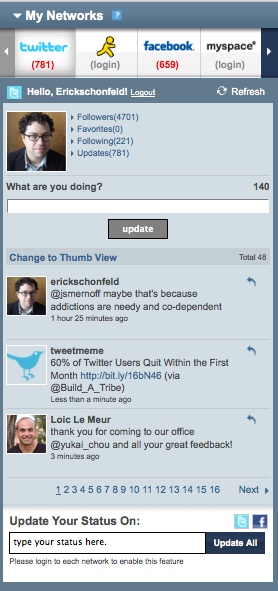
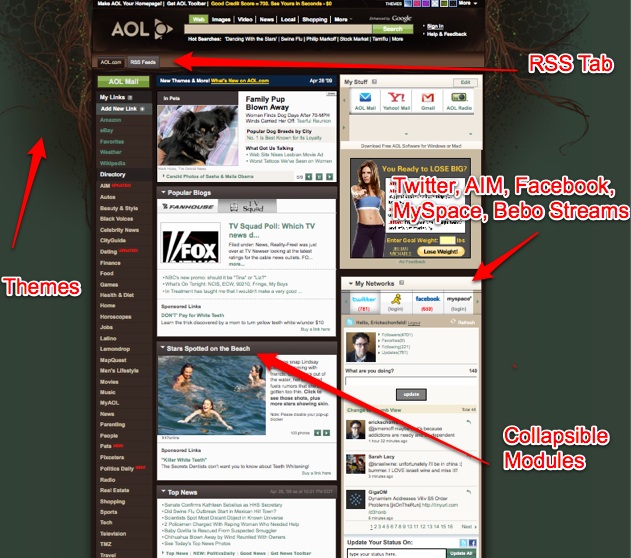

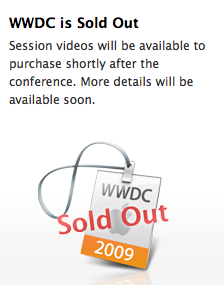 Apple announced today that its
Apple announced today that its 


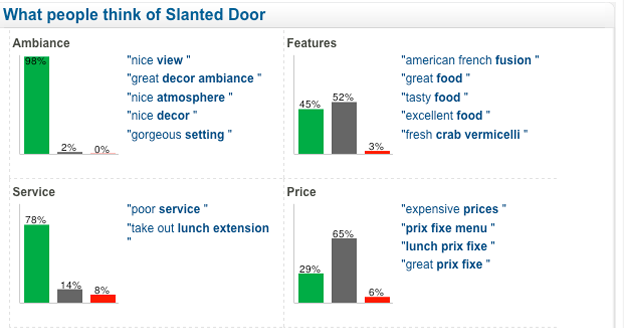

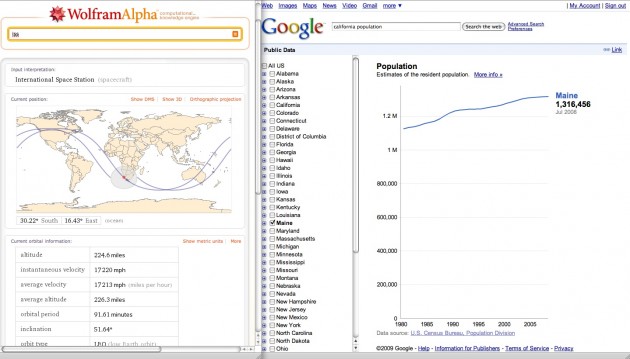
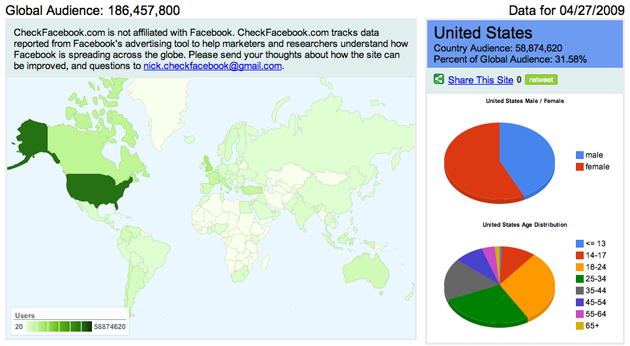
 Just last month,
Just last month, 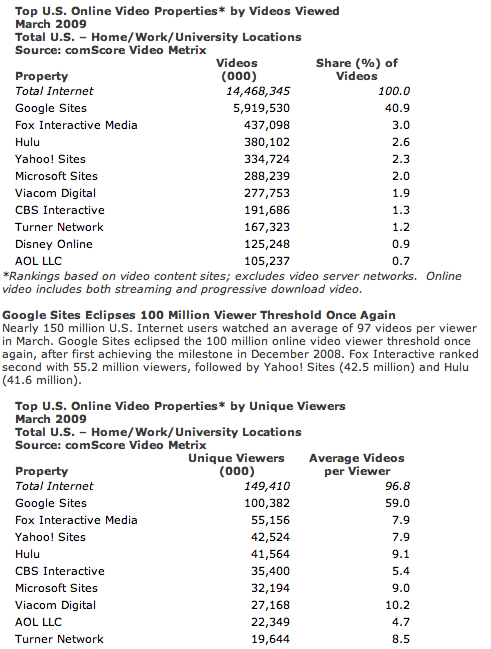
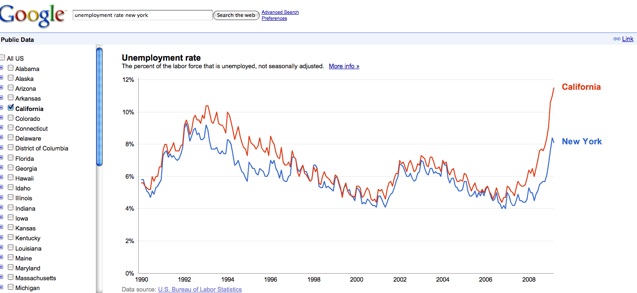
 I continue to be fascinated by
I continue to be fascinated by 
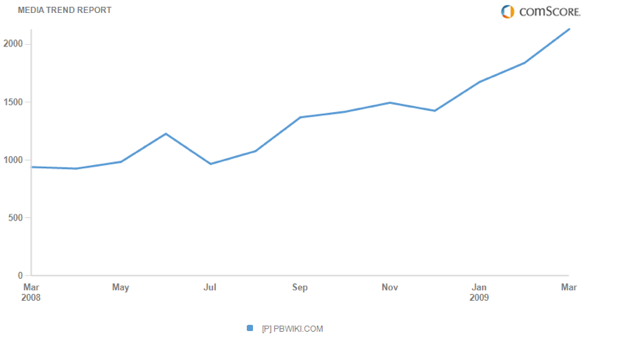

No comments:
Post a Comment